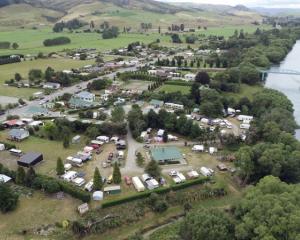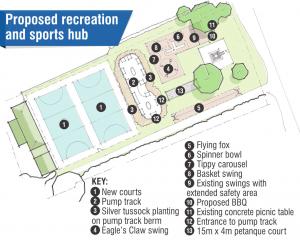As the population of Central Otago expands, consideration is being given to water use in the region.
At its meeting in Alexandra on Wednesday, the Central Otago District Council discussed a request from the developer of Shannon Farm, at Ripponvale, for an on-demand water supply for 170 lots, ranging in size from 1500sqm to 6000sqm.
The request triggered discussion among council staff for the potential risk of high water use to irrigate these properties, the future supply of water and whether the current volumetric charging was sufficient to manage high water use.
In a bid to manage water, physical flow restrictors are used on networks supplying rural properties or large lots outside the urban supply area, including Patearoa rural properties (domestic and stock water), Ripponvale, and rural properties next to the pipeline between Roxburgh and Lake Roxburgh Village.
Restrictors are also required on lifestyle subdivisions and properties on the fringes of networked supplies but outside the urban supply area such as Earnscleugh Rd near Alexandra, Waikerikeri Valley Rd in Clyde, and Gilligans Gully Rd in Alexandra.
A restrictor is a metal disk with a hole in it fitted in the property water connection which allows a preset flow — usually 1000litres per 24-hour period — to trickle into a tank on the property for later use.
The tank is required to provide sufficient flow and pressure to operate mains pressure appliances on the property, and is the responsibility of the property owner.
However, there were challenges with the use of restrictors and property owners had been known to tamper with them to increase flow to their property.
The Shannon Farm developer proposed a separate reticulated irrigation supply, fed from a private bore, and an irrigation agreement for each lot purchaser, to avoid having a water restrictor and tank on each property.
Speaking to councillors, three waters director Julie Muir said staff had to take into account the risk residents could continue to use the potable supply for irrigation rather than the separate irrigation supply, which would put further pressure on supply.
While the council’s uniform annual charge was high compared with other councils, its volumetric charge — where people are charged for what they use — was very low.
That could result in not achieving the demand management outcomes desired for some high-demand properties, or those that were able to pay, Ms Muir said.
However, with high uniform annual charging every property ended up paying more, instead of just those that had high water use.
Volumetric charging using pricing was recommended as the most equitable option to manage high water use.
Cr Neil Gillespie said the recommendation was logical given universal metering and volumetric charging was introduced nearly 20 years ago.
It was timely for the model to be reviewed as much had changed including section sizes, and the cost of water and infrastructure.
Further work would be done to identify the options for implementing changes, and to consider the balance between achieving water conservation and efficiency, against financial stability and sufficient cost recovery, Ms Muir said.
These options would then be referred to the council for further consideration, and then included in the long-term plan, and public consultation would follow.










